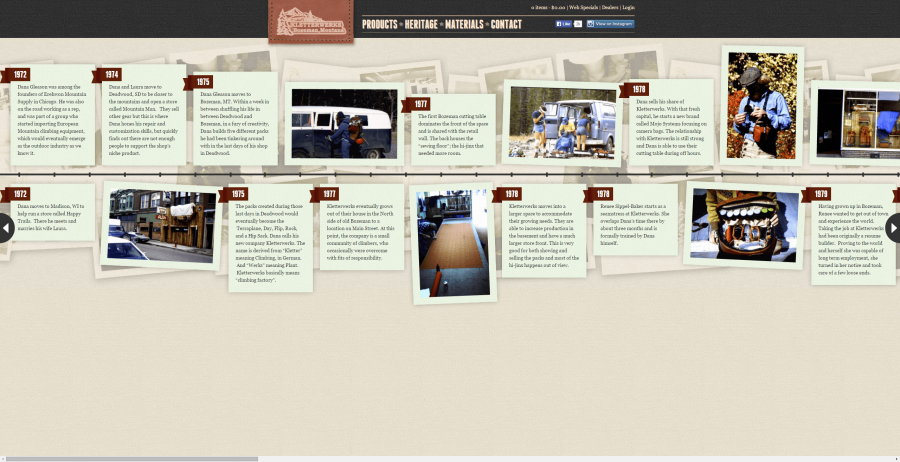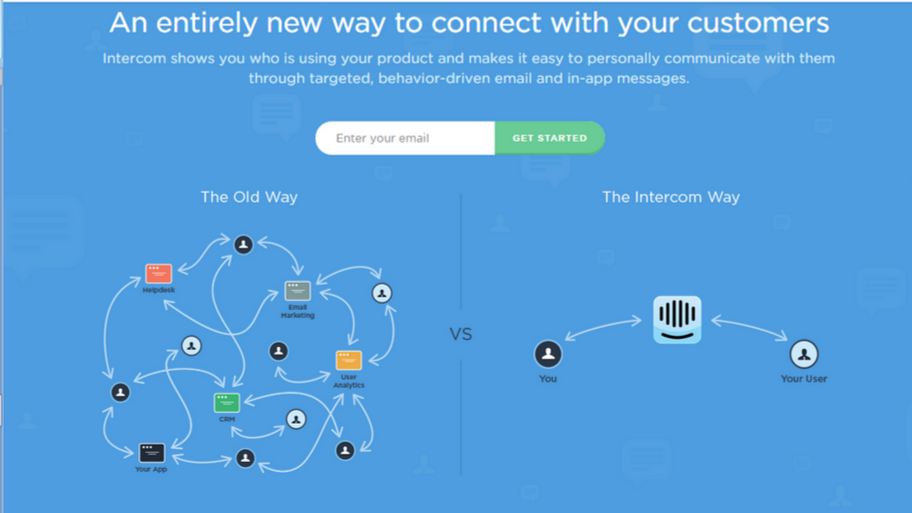A blog post or video that one person might find boring can be intensely interesting to somebody else. Software developers, accounting firms, industrial manufacturers, layers, home cleaning services, real estate companies….you name a business, and the odds are that it’s perceived as boring by some people.
Actually, it’s not the industry that’s boring. It’s just the content. A carpet cleaning service is not interesting for me under the regular circumstances, but it’s the first thing on my mind when my dog runs all over the carpet after a muddy walk. The secret to creating and marketing compelling content is to understand what type of information your customer is looking for, and provide that information in a creative and convenient way.
Here are 12 content marketing ideas to help you kick-start your creativity and turn any boring eCommerce business into a crowd-puller.
#1. Know Your Customers
The more time you spend deep-diving into your target customer’s profile and demographic, the lesser the amount of energy (and money) that you’ll waste when executing your inbound marketing. Learn about the needs, interests, attitudes, opinions, demographics, and psycho-graphics of your customers as deeply as you can.
#2. Learn About Their Favorite Topics
The topics that your customers like to engage with and the media channels that they frequent are of special relevance for your content marketing. It’s not a compulsion that someone is interested in your product or service directly, but there can be an unlimited number of general-interest topics that your product can be related to. For example, if you sell vacation rentals, you don’t need to talk about the bedrooms and furniture all the time. You can talk about the beach or the city, the nightlife and shopping, etc. This makes your content more interesting for your audience. Give Buzz Sumo a try to get an idea of what content gets shared the most in your industry.
#3. Know Their Media Habits
Do the majority of your customers sign into Facebook, Twitter, or LinkedIn? Do they like to read blog posts, watch video or attend webinars? You must create the type of content that your customers prefer and share it through the channels they spend most of their time on. There are many ways to track your customers’ media behavior. You can find out their social media profiles from their email addresses in your mailing list. You can use Google Analytics and other free and paid online tracking tools to gain an insight into your customer. Find out their LinkedIn and Facebook groups, their Twitter lists, blogs, YouTube channels, and other places that are relevant for your business and customers.
#4. Brainstorm Ideas
Don’t just talk to the walls. Involve your marketing team and/or agency in your quest for creating great content. Talk to your sales people, clients, customers, and even the team in the mail room or warehouse. Great ideas can come from anyone and anywhere. If you are a solo-preneur, talk to your family, friends, customers, and social media contacts. Observe your competitors and see what types of content are trending with your audience.
#5. Weave A Fantastic Brand Story
After you know the needs and the buying process and have hammered loads of ideas in your brainstorming sessions, it’s time to come up with a spellbinding story. Make your story sellable and interesting for your audience. It is from this story that your brand will get its voice, which must be carried throughout your content marketing. Use the elements of emotion, visualization, urgency, fear, and lust to spice up your story. The most irresistible brand stories are unexpected, provocative and relatable. At the same time, you should always keep your customer’s needs in view and provide upfront the information the they want.
Different Brands, Different Stories
MailChimp‘s brand story starts like, “More than 7 million people use MailChimp to create, send, and track email newsletters…”, and proceeds to more detailed story-telling after communicating the core benefits, who MailChimp is for, and what all you can do with it. It was among the top 10 brand stories of 2013.
Kletterwerks, a company that manufactures packs for mountaineering and hiking, has a more elaborate approach toward brand storytelling. They have a timeline on their Heritage page that you can scroll from left to right to read about important events in the brand’s history all the way from 1972.

Once again, the story you tell and how you tell it will strongly depend upon what your customers want to hear.
#6. Create Videos
Describing how to design an eBay store template is boring both for you and your reader. Wouldn’t it be more interesting if you made a video with a screen recording tool and you spoke into a microphone? Boring jobs can become incredibly more interesting if you show people how to do them. For instance, this viral video from GEICO, Government Employees Insurance Company, has reached more than 7 million people so far. See how creativity can make a typically boring topic interesting and compel viewers to engage with the content.
Keep your videos under 90 seconds to keep your viewers attention. You can make lifestyle videos, how-to’s, reviews, and mini-documentaries.
#7. Publish Guides
For complicated topics, such as using web designing software, guides can be more effective than videos. You can market your guides (or eBooks) through email, your website, and social media. Make it downloadable in a simple PDF format and offer it free to your subscribers. When writing a guide, always look for fresh topics that are in demand. Include statistics and experts’ opinions to add credibility. Keep your guides between 20,000 and 30,000 words, make an attractive page layout, use pictures and charts, and get a stunning design for the cover.
One of our clients, a realtor, recently published a guide about real estate taxes. Taxes are a big problem at their location and people need to consult with brokers or tax authorities to get their queries answered. Despite the seemingly boring topic, the guide was downloaded several thousand times within 90 days of its launch, bringing the amazing benefits of content marketing to a solo realtor.
#8. Use Pictures
Pictures are the most popular form of content on the Internet. If you think it’s only food, fitness, cats or fashion industries that have a patent to using stunning images, you should think again.
Imagine, if General Electric were using the pictures of their power-guzzler industrial equipment for content marketing! Instead, the company posts pictures signifying innovation, eco-friendliness, achievement, love, and awesomeness to their Pinterest boards. Check out this flirtatious pin from their board “Hey Girl.“
The point is, you can relate anything to anything. Don’t just think about your product and business. Think about the world that you do business in. Think about the problems your customers face in their day-to-day lives. If you can’t think of anything else, you can at least give them some humour and a reason to smile.
Use memes, gifs, landscapes, cartoon characters, action shots, illustrations, photos, and other types of visual content that empathizes with your customers while communicating your brand message. There are a multitude of incredible tools out there to help create powerful visual content.
#9. Simplify Complicated Information
If your business involves a lot of data that you must communicate to your target market in order to sound credible, you must break down the complicated information into bite-size chunks that your customers can easily devour. For example Intercom is a CRM solution provider that helps you digitally track and connect with the people who are using your products. Pretty boring, one might think. But wait till you see their content. Here’s a look at their landing page.
An average person may think CRM is complicated, but see how Intercom uses a simple illustration to depict that their solution actually simplifies things for their customers. The blog strategy that they are following is even more exciting. They use colloquial language and a matter-of-fact style along with simple graphs and data visualizations to make their content compelling. Here’s the opening of a blog post on growth hacking that uses several graphs to illustrate the long- and short-term effects of growth hacking.

Growth hacking is a dirty world. Scraping websites and spamming activity feeds grows a business in the same way anorexia solves weight problems, swapping sustainable solutions with short term kludges.
Smart Insights do a wonderful job of providing incredible digital marketing data in an easy-to-soak-up way. This 2015 Digital Marketing Trends post is a great example of using an immense amount of data but giving your readers bite sized chunks to digest.
#10. Provide Answers And Solve Problems
Content built around hot industry issues and problems has the highest chances of trending with your audience. Take the example of Chipotle Mexican Grill. The brand realized GMO food was a big issue in their industry, and went ahead to create the Scarecrow video and gaming app that challenges users to bring real food back to the people. The campaign has become hugely popular, achieving several million views and installations in a short time. Wait, isn’t Chipotle an interesting business? Maybe it is, but the GMO theme can also be relevant for other businesses in boring niches such as irrigation system suppliers or gardening tools manufacturers. Remember, you can relate anything to anything if you are creative enough.
Look for burning questions in your industry on forums such as Quora, Yahoo! Answers, and Twitter, or set up Google alerts to learn about trending topics. Then, think about how you can answer those questions in the most engaging way.
#11. Tell Stories
Don’t bore the living daylights out of your audience by bombarding them with updates about your product features. Instead, tell stories about how those features improve the life of your customers. Take the example of ZenDesk, a company that provides customer service and support ticket software. Instead of babbling-on about their system and its features, the first thing that you see on their website is a video that tells the story of a ticket issued to a customer, and how the customer’s problem got resolved.
Share customer success stories, expert interviews, case studies, reviews, and inspiring real-life examples, showing, instead of telling your customers what your product or service can do for them.
#12. Monitor And Adjust
None of us are born great content marketers. We acquire the sense of what type of content performs better than others through observation and monitoring. Revisit your data regularly and monitor the performance of your blog posts, videos, social media updates, emails, and the rest of your content marketing activities. Focus more on the type of content that more people engage with. Learn from your competitors and people in other industries, and keep making your content more and more interesting.






